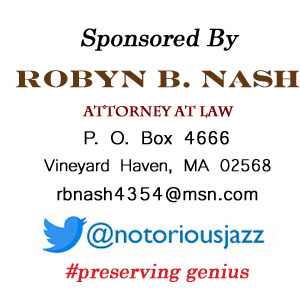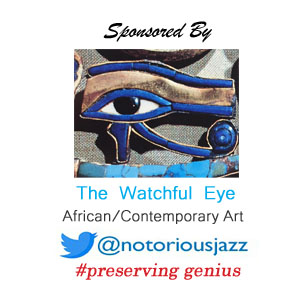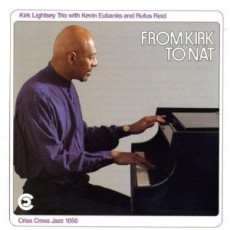
Daily Dose Of Jazz…
Kirkland “Kirk” Lightsey was born on February 15, 1937 in Detroit, Michigan and started his piano instruction at the age of five, adding clarinet through high school. After his Army service he worked accompanying singers around Detroit and in California, gaining some attention when he recorded with Sonny Stitt in 1965 and on five Prestige dates with Chet Baker. He would work with Yusef Lateef, Betty Carter, Bobby Hutcherson, Kenny Burrell, Pharaoh Sanders and many others.
From 1979 to 1983 he toured with Dexter Gordon and was a member of the Leaders. Through out the 80’s he led sessions including duets with Harold Danko, performed with Jim Raney, Clifford Jordan, Woody Shaw, David Murray and Harold Land.
Rooted in the hard-bop genre, Kirk has developed his own style and sound that is marked by a certain openness and playfulness. An accomplished flautist, he occasionally doubles in live performances.
In 2004 he released a duo album with Rufus Reid titled Nights At Bradley’s and recorded a quintet project Lightsey To Gladden in 2008, dedicated to the late great drummer, Eddie Gladden. Over the course of his career he has amassed some three-dozen albums as a leader and sideman and pianist Kirk Lightsey continues to create music and perform worldwide.
More Posts: piano

Daily Dose Of Jazz…
Irving Gordon was born in Brooklyn, New York on February 14, 1915 and as a child, studied violin. After attending public schools in New York City, he went to work in the Catskill Mountains at some of the resort hotels in the area. While working the resorts, he took to writing parody lyrics to some of the popular songs of the day. He has been credited with writing “Who’s On First” made famous by Abbott and Costello, according to his son William.
In the 1930s, he took a job with the music-publishing firm headed by talent agent Irving Mills, at first writing only lyrics but subsequently writing music as well. Together they wrote two songs for Duke Ellington, Please Forgive Me and Prelude To A Kiss and co-wrote Blue Prelude with Ellington.
After writing Mister and Mississippi, a Patti Page hit, Irving decided he enjoyed puns on state names, and some years later wrote Delaware, a Perry Como hit. He also went on to write for Bing Crosby, Eddy Arnold and Billie Holiday. But he is perhaps best known for his song, “Unforgettable” recorded by Nat King Cole in 1951 and then three Grammys in 1992 by his daughter Natalie Cole, in which Gordon himself received a Grammy. Nat’s version was inducted into the Grammy Hall of Fame in 2000.
In the 1940’s he moved to Los Angeles where he spent the rest of his life continually writing and composing and is noted for his contribution in music and lyrics of the Americana genre. Songwriter Irving Gordon passed away in his home of cancer on December 1, 1996.
More Posts: songwriter
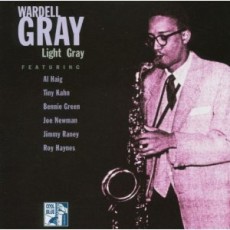
Daily Dose Of Jazz…
Wardell Gray was born the youngest of four children on February 13, 1921 in Oklahoma City, Oklahoma. Though his early years were spent there, in 1929 his family moved to Detroit. By 1935 he attended Northeastern High but soon transferred to Cass Technical High, whose noted alumni were Donald Byrd, Lucky Thompson and Al McKibbon. After year and before graduating Wardell dropped out and began playing the clarinet, but it was hearing Lester Young that drove him to pick up the tenor.
He played around Michigan in various bands led by pianist Dorothy Patton, Jimmy Raschel and Benny Carew and by 1941 a short-lived marriage produced a daughter. Gray got his big break when he joined the Earl Hines Orchestra in 1943, not only nationally known but had nurtured the careers of Dizzy Gillespie and Charlie Parker. For the young tenor he toured all over the country for the next three years becoming a featured soloist and subsequent recordings showed a relaxed, fluent stylist.
After leaving Hines, Wardell settled in Los Angeles and started recording under his own name for the Sunset label. He also worked with Benny Carter, Billy Eckstine and blues singer Ivory Joe Hunter. But it was Central Avenue that he found his greatest pleasure playing after-hours sessions, attracting the owner of Dial Records to hire him to play showcases for Charlie Parker, showing no signs of intimidation. On the avenue Gray held tenor battles with Dexter Gordon and his light sound and swift delivery was a match for Dexter’s big sound. The tenor jousts soon became a symbol for the Central Avenue scene.
With his career moves progressing he joined Benny Goodman’s small groups in 1947 and although musically successful, it was not financially. In ’48-‘50 he moved between Count Basie and Benny Goodman, recorded with Tadd Dameron, ended his second marriage and formed a septet that included Clark Terry and Buddy DeFranco bringing to audiences a very relaxed swinging band. Over the next few years he got married for the third time, did a few recording dates with Art Farmer, Hampton Hawes, Dexter Gordon and Teddy Charles, and performing most notably with Gerald Wilson’s Orchestra trading choruses with Zoot Sims and Stan Getz.
One of the top tenors to emerge during the bop era, Wardell Gray passed away under mysterious circumstances, found on a stretch of desert outside Las Vegas with a broken neck, on May 25, 1955.
More Posts: saxophone
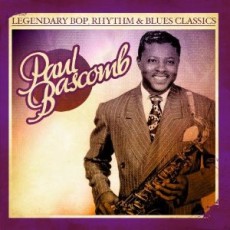
Daily Dose Of Jazz…
Paul Bascomb was born into a family with nine siblings on February 12, 1912 in Birmingham Alabama. From an early age he felt the urge to create music and by his late teens he was an accomplished clarinetist and tenor saxophonist. Attending Alabama State Teacher’s College he was a founding member of the Bama State Collegians, a respected regional swing band that stayed together from the mid-thirties on assuming leadership under Erskine Hawkins. Paul was a part of this band till the mid 40’s, save a stint with Count Basie’s band from 38-39. During this period he co-wrote the tune Tuxedo Junction with Hawkins but by 1945 left the band a co-led small combos with his brother Dud.
1946 saw Bascomb in New York recording with a small combo for Alert records. A year later he moved to the Jersey based Manor label recording a series of sides for them, went to the London label and recorded Pink Cadillac and in ’48 did a session with The Riffs who eventually became famous with King Pleasure.
In 1950 Paul relocated to the Midwest and began a long association with the Chicago and Detroit nightclubs where owners were allowing black and white musicians to play together. By 1952 he started recording extensively with United Records and later for Mercury as he ventured into the R&B world.
By the late fifties he demand changed and took a job with the city of Chicago. He returned to music in the late 70s, was inducted into the Alabama Jazz Hall of Fame in 1979, and played well into the 80s for well receiving European audiences. It was the last hurrah for tenor saxophonist Paul Bascomb, who passed away at 74 years old on December 2, 1986.
More Posts: saxophone

Daily Dose Of Jazz…
Didier Lockwood was born on February 11, 1956 in Calais, France and began studying classical violin and composition at the Calais Conservatory at six years old. But thanks to his brother Francis, Didier’s world was opened to other forms of music and he quit his studies in 1972. Entranced by the improvisation of Jean-Luc Ponty’s playing he took up the amplified violin. He credits being influenced by Polish violinist Zbigniew Siefert and fellow Frenchman Stephane Grappelli with whom he toured. By 1975 he joined progressive rock group Magma followed by fusion group Uzeb.
During the 70’s he played in Paris with Aldo Romano and Daniel Humair among others, led a fusion group called Surya and recorded with Tony Williams. The 80’s saw Didier performing at the Montreux Jazz Festival teamed with guitarist Allan Holdsworth, bassist/vocalist Jack Bruce, drummer Billy Cobham and keyboardist David Sancious, playing in the U.S. and recording with violin colleagues John Blake and Michal Urbaniak.
Lockwood’s career has been diverse ranging from fusion to swing to advanced hard bop but he first gained fame for exploring new musical landscapes and performing various sound imitations such as seagulls and trains. Although slated as the heir apparent to the line of great French violinists behind Grappelli and Ponty, by the nineties he maintained a very low profile. He established a string instrument improvisation school in 2001 called Centre des Musiques Didier Lockwood, has been touring with jazz guitarist Martin Taylor since 2006 and written several film scores.
More Posts: violin



